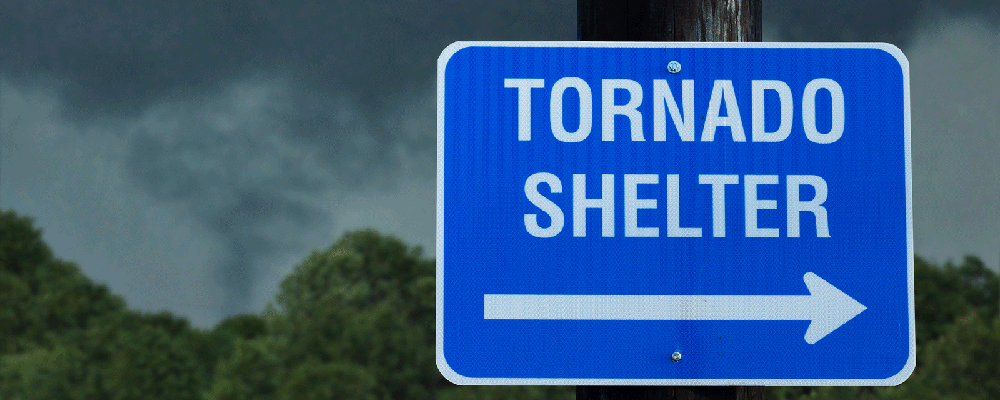 Hazards and disaster research—such as tornado risk communication, for instance—often has important implications for public health. Image credit: Shuttershock.
Hazards and disaster research—such as tornado risk communication, for instance—often has important implications for public health. Image credit: Shuttershock.
The Natural Hazards Center is pleased to announce the release of the tenth module in the CONVERGE training series. The Public Health Implications of Hazards and Disaster Research discusses the relationship between public health and hazards and disaster research.
The module provides an overview of the health impacts that disasters have on communities. Drawing on empirical research, it describes the impact disasters have on population-level health and the role that the public health workforce has in mitigating, preparing for, responding to, and recovering from disasters. This free online course was made possible with the support of the Center for Disease Control and Prevention (CDC) and the National Science Foundation, and is part of a series of training modules designed to support students and emerging researchers to conduct ethical and methodologically sound studies.
Public Health Impacts of Disasters
The Public Health Implications module will be an especially effective way for hazards and disasters researchers to learn to identify their work applies to public health needs and policies.
“Researchers may need support to explain the real-world implications of their studies, especially as they relate to public health,” said Natural Hazards Center Director Lori Peek, who leads the CONVERGE initiative. “This module identifies ways that hazards and disaster research can help inform and advance public health practice and policy.”
The module includes multidisciplinary case studies that illustrate the overlap between disaster research and the functions and capabilities established by the CDC Center for Preparedness and Response. It also provides a list of questions to guide researchers in reflecting on how their work connects with public health outcomes. Sliders, tables, and call-out boxes throughout the interactive module help to present key concepts and information in an interactive way.
The new module, like the others in the series, presents key concepts and case studies using interactive sliders, tables, and call-out boxes. To complete the module, users must pass a 10-question quiz to receive a certificate worth one contact hour of general management training through the International Association of Emergency Managers (IAEM) certification program. The CONVERGE website provides supplementary materials, including the CONVERGE Assignment Bank and Annotated Bibliographies, as well as previously released modules focusing on social vulnerability and disasters, disaster mental health, cultural competence, Institutional Review Board procedures, emotionally challenging research, gender-based violence in fieldwork, broader ethical considerations, and perishable data. The next training modules to be released in the series include:
Positionality in Hazards and Disaster Work (in partnership with faculty and students at the University of Ottawa)
Social Science Methods and Approaches for Hazards and Disaster Research
To receive updates and information on new CONVERGE training modules and other resources, please subscribe here.
About the Natural Hazards Engineering Research Infrastructure
Funded by the National Science Foundation, the Natural Hazards Engineering Research Infrastructure—NHERI—is a network of experimental facilities dedicated to reducing damage and loss-of-life due to natural hazards such as earthquakes, landslides, windstorms, and tsunamis and storm surge. It is supported by the DesignSafe Cyberinfrastructure. NHERI provides the natural hazards engineering and social science communities with the state-of-the-art resources needed to meet the research challenges of the 21st century.
Acknowledgements
This CONVERGE Training Module is based upon work supported by the National Science Foundation Natural Hazards Engineering Research Infrastructure (NSF Award #1841338) with supplemental funding from the Centers for Disease Control and Prevention. Any opinions, findings, and conclusions or recommendations expressed in this material are those of the authors and do not necessarily reflect the views of the NSF or CDC.
